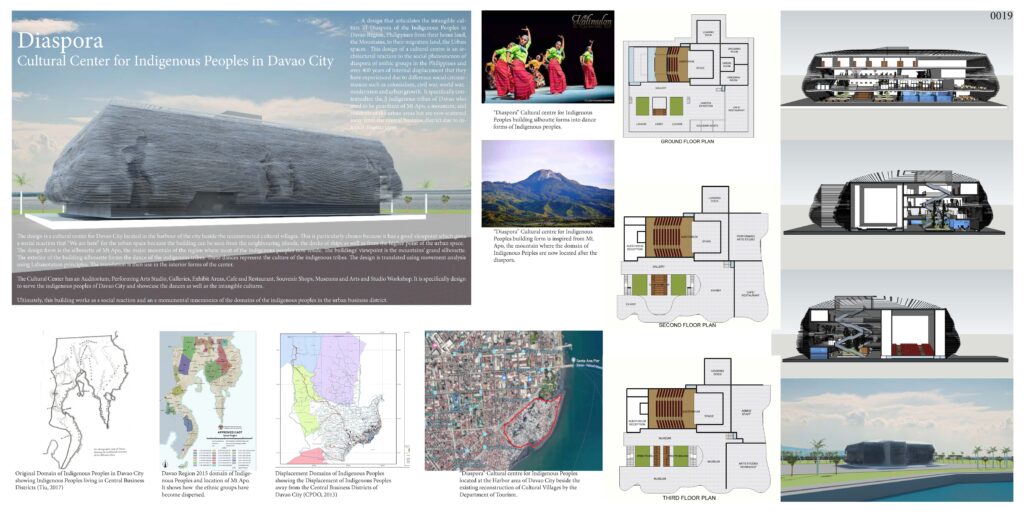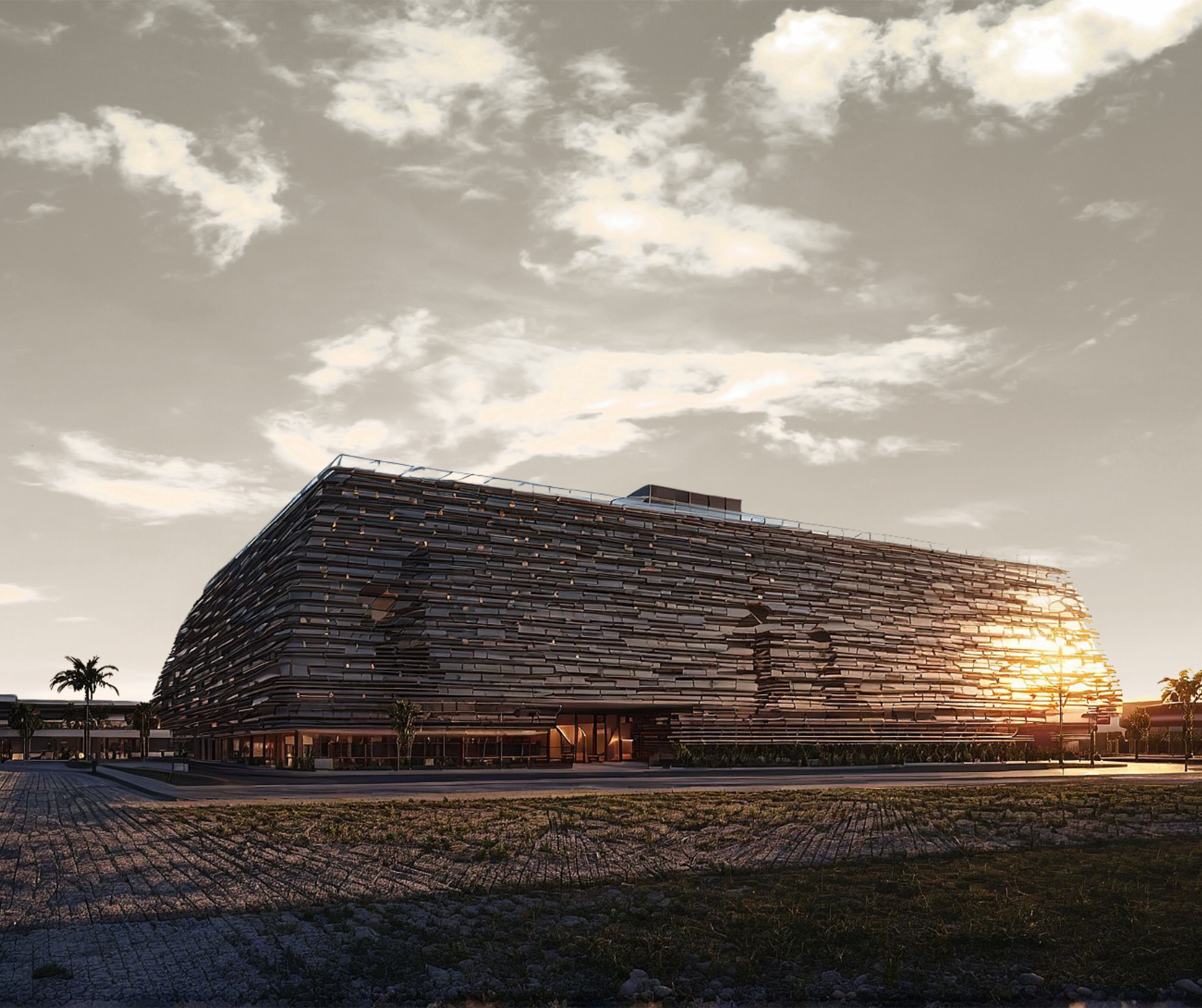In the heart of Davao City, nestled by the harbor, a project proposal for a competition—a cultural center dedicated to the Indigenous Peoples of the region. Titled Diaspora: Cultural Center for Indigenous Peoples, this structure is more than just a building; it is a tribute to the history, movement, and resilience of Indigenous communities who have faced displacement over the years. Designed with deep cultural symbolism and a powerful social statement, the center aims to serve as a beacon of identity, preservation, and celebration for the Indigenous Peoples of Davao.
Architectural Concept and Symbolism
The design of the cultural center is heavily inspired by Mount Apo, the highest peak in the Philippines and a sacred landmark for many Indigenous groups in Mindanao. The structure’s form mimics the mountain’s silhouette, reinforcing its connection to the ancestral domains of these communities. This choice of design embodies the migration and displacement of Indigenous Peoples, whose domains once flourished in Davao but have since been scattered due to urbanization and social changes.
Beyond the exterior, the building’s architectural elements incorporate movement analysis derived from Indigenous dances. The dynamic forms and layers in the design reflect the intangible culture of these communities, preserving their heritage through spatial and artistic representation. Movement, a core aspect of Indigenous tradition, is translated into the flow of the building, making it a living, breathing monument to their traditions.

Location and Socio-Cultural Significance
Strategically situated in the harbor area of Davao City, the Diaspora Cultural Center stands beside a reconstructed cultural village developed by the Department of Tourism. This placement is deliberate, offering visibility from different parts of the city and symbolizing the resilience and presence of Indigenous communities in the urban landscape. The location also serves as a connection point between past and present—a space where history meets modernity.
Davao City, historically home to various Indigenous groups such as the Bagobo, Mandaya, and Ata, has seen these communities move away from central business districts due to economic and social shifts. This cultural center aims to bridge that gap by creating a dedicated space for Indigenous Peoples to showcase their traditions, crafts, and performing arts. It serves as a statement that Indigenous cultures are not forgotten but rather celebrated and acknowledged in the evolving cityscape.
Facilities and Functional Spaces
The Diaspora Cultural Center is designed to be a multifunctional hub for cultural and artistic expression. It will house an array of facilities, including:
- Auditorium – A venue for performances, storytelling sessions, and cultural presentations, allowing Indigenous groups to share their music, dance, and oral traditions with the public.
- Performing Arts Studios – Spaces dedicated to the practice and teaching of Indigenous dances, ensuring that traditional movements and rituals continue to be passed down to future generations.
- Exhibit Areas and Galleries – Showcasing Indigenous crafts, textiles, and historical artifacts, these spaces will function as a living museum celebrating the rich heritage of Mindanao’s Indigenous communities.
- Café and Restaurant – Serving Indigenous cuisine, the café will introduce visitors to the traditional flavors of Indigenous gastronomy, further immersing them in the culture.
- Souvenir Shops and Marketplaces – Providing economic opportunities for Indigenous artisans and entrepreneurs, these shops will sell traditional crafts, woven products, and handmade jewelry.
- Arts and Studio Workshops – Encouraging creative expression, these studios will offer workshops on Indigenous art forms such as weaving, beadwork, and pottery.
Each of these facilities contributes to the overarching goal of the center: to create an interactive space that fosters cultural appreciation, economic empowerment, and education.
A Monument to Memory and Resilience
The Diaspora Cultural Center is not just a place of culture but also an architectural and historical landmark that serves as a mnemonic device for Indigenous domains. Its very presence in the urban space functions as a form of social resistance, reaffirming that Indigenous Peoples belong and have a rightful place in the modern world.
By providing a platform for cultural expression, the center ensures that traditions continue to thrive despite the pressures of globalization. It serves as an educational hub, inviting both locals and tourists to engage with Indigenous cultures in meaningful ways. More than that, it stands as a monument to resilience—a reminder of the journeys, struggles, and triumphs of Indigenous communities throughout history.

Conclusion
As urban development continues to shape cities like Davao, it becomes increasingly important to create spaces that honor and uplift marginalized communities. The Diaspora Cultural Center is a step towards integrating Indigenous culture into the city’s narrative. By merging traditional influences with modern architectural innovation, the center not only preserves history but also propels it forward, ensuring that the stories, dances, and identities of Indigenous Peoples remain alive for generations to come.
Ultimately, this cultural center is more than just a structure; it is a homecoming, a reclamation, and a celebration of the Indigenous roots that define the rich cultural fabric of Davao City.
This is a competition proposal with the hopes that the Davao City government will embrace.

